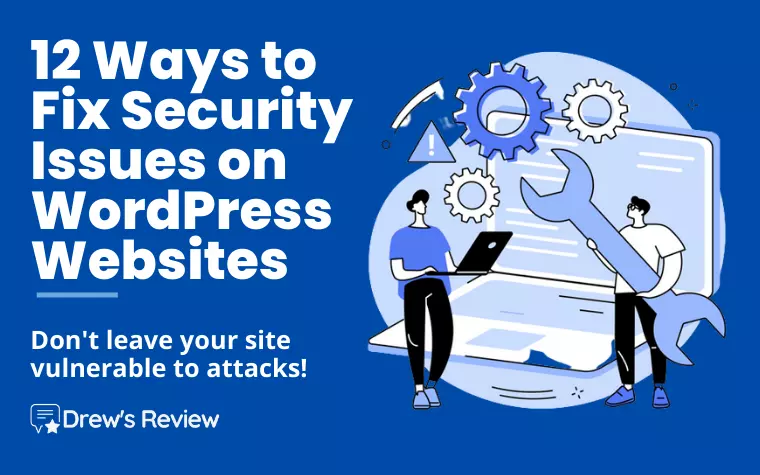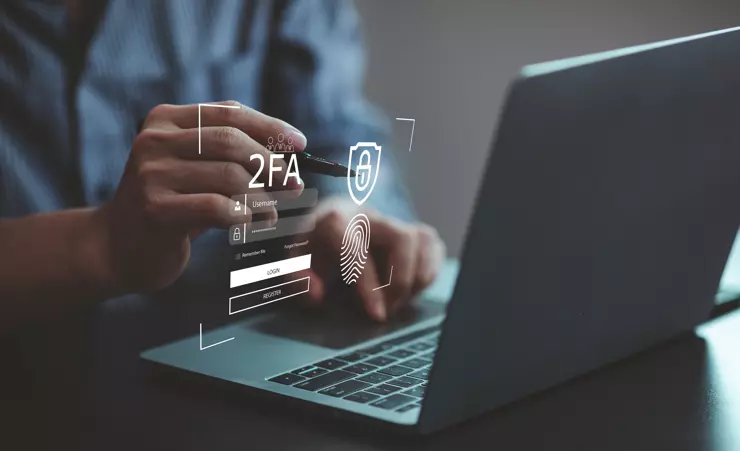
WordPress is probably the most commonly used CMS by website owners. The data says that over 39% of websites are developed using WordPress. This data makes WordPress not only a top priority for website owners but also for hackers.
The window for attack becomes pretty big for hackers. WordPress website attacks are innumerable - from newbies who are experimenting to break into a site to hackers with illegal motives all are eyeing WordPress websites.
The attack on these sites becomes easy as the website owners rely mostly on the default security settings and take no pain to tighten the security. Here, I have come up with some sure shot points to tighten the loose ends of your WordPress website security. By following these security measures diligently, it will increase your website security.
1. Opt For the Right Web Host
The first move towards securing your WordPress website comes with choosing the correct web host for your website.

A good and reliable web host comes with inbuilt security features that come into force when a cyberattack occurs. When many websites are hosted on a single web host and one website becomes compromised, every other site is at risk.
So, it is highly recommended to choose a reliable web host.
2. Install WordPress Backup Solutions
Creating a backup of your WordPress website is the foremost measure in case an attack occurs. A strong backup option can get you back on track within hours.
You can have an offsite backup on Dropbox, Google Drive etc. Remember that a full backup of the website is done regularly to ensure safeguarding from a ransomware attack.
3. Move WordPress Websites to SSL/HTTPS
This is the newly adopted measure to safeguard the site from any cyberattack. You must install an SSL certificate and switch your website to HTTPS.

This is the most secured way in which communication is done in an encrypted way and can be decrypted only via a private key. You can buy a low cost SSL like Comodo SSL, RapidSSL Certificate and benefit from it at a very low cost.
4. Abide in Strong Password Policies
A common yet very important way to secure WordPress websites is by ensuring strong password policies.
Passwords should always be a mix of alphabets and numbers and an easily guessable password must be avoided to eliminate the chances of a brute force attack.
Make sure you don't use your social media passwords on any websites.
5. Limit Login Attempts
There is no inbuilt feature on a WordPress website to limit the number of times a user can enter the username and password.
To limit the Login attempts use a WordPress plugin to limit login attempts. This help in reducing the chances of a brute force attack and alerting the website owner before an attack is likely to happen.
6. Add Two-Factor Authentication
An industry-standard way to secure your WordPress website is the use of two-factor authentication. It uses two credentials to log in to a website.
One may be the password you enter and the other being the OTP sent to your mobile phone or any other device or your biometrics verification.

7. Prevent SQL Injections
SQL is a commonly used database language to access the data of a WordPress website.
An attacker uses SQL injection on the forms and contact page of the WordPress website and tries to access the data. This can be stopped by restricting the use of special characters on the form page.
8. Delete Unused Plugins and Themes
Now and then, WordPress comes up with new themes and plugins, we often try our hands on the newly added themes and plugins, but end up keeping them unused.
We must uninstall such plugins and themes so that none of our important data remains a part of it. Also, make sure that you regularly update all the themes and plugins and use the latest bug-free version of each of them.
9. Change WordPress Login URL and Default Username
Once you have launched your WordPress website, make sure you change the default WP-admin login URL. This can be done only if you have access to the admin page and you can use the WPS hide login plugin to do that.
Also, change the default username “admin". This is the most guessable username one can come up with. Such changes strengthen the security of the website fourfold.
10. Deny Access to Sensitive Files in WordPress
Certain important files are present at the time of the WordPress website's launch. These may be install.php, readme.html and likewise, such files need to be kept hidden from any kind of outside access.

There is a predefined code that you can use to deny access to such files. You can easily find the code on any coding site.
11. Add Security Questions to WordPress Logins
Adding a security question to your WordPress website increases the security immensely. You can use the WP security question plugin to add a security question on the Login page.
Getting track of the security question becomes somewhat a tedious task for hackers.
12. Scanning WordPress for Malware and Vulnerabilities
WordPress security plugins are often an important part of any WordPress website. They routinely check the site for malware and other suspicious activities.
The admin can do a manual checking of the site when the website ranking or web traffic to the site is decreasing. These sudden checks keeps us aware of any attack and helps us take the necessary actions on time.
Conclusion
Every day new cybersecurity threats are emerging. One needs to be on their toes to protect their website or blog.
By practising the aforementioned advice you might not eliminate the risk to your website entirely, but you will surely reduce the risk of your site being vulnerable to attacks.
Even if you are not tech-savvy, these small basic steps are easy to get track of. Still confused? Get some help from a professional IT security expert. They will take the necessary measures to protect you from cybercriminals.
Liked this article? Share it!
- Best Ways to Make Passive Income on YouTube - April 15, 2024
- How I Make Faceless YouTube Channels With AI - April 9, 2024
- Top 21 Faceless YouTube Niches to Earn Big Profits in 2024 - April 3, 2024
